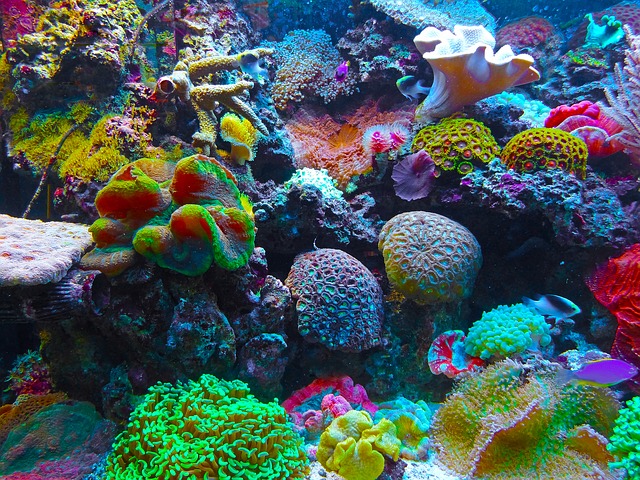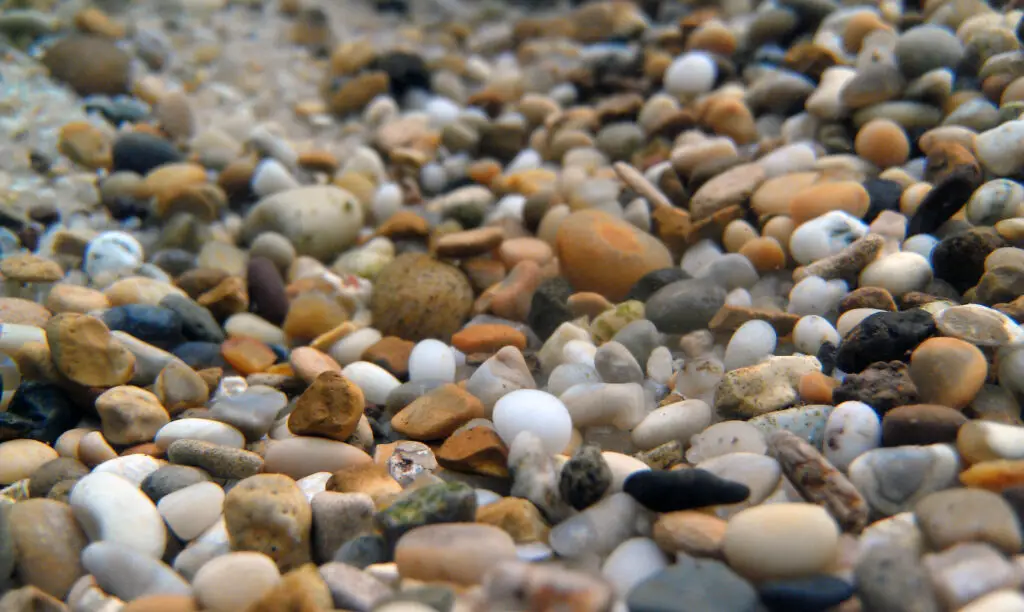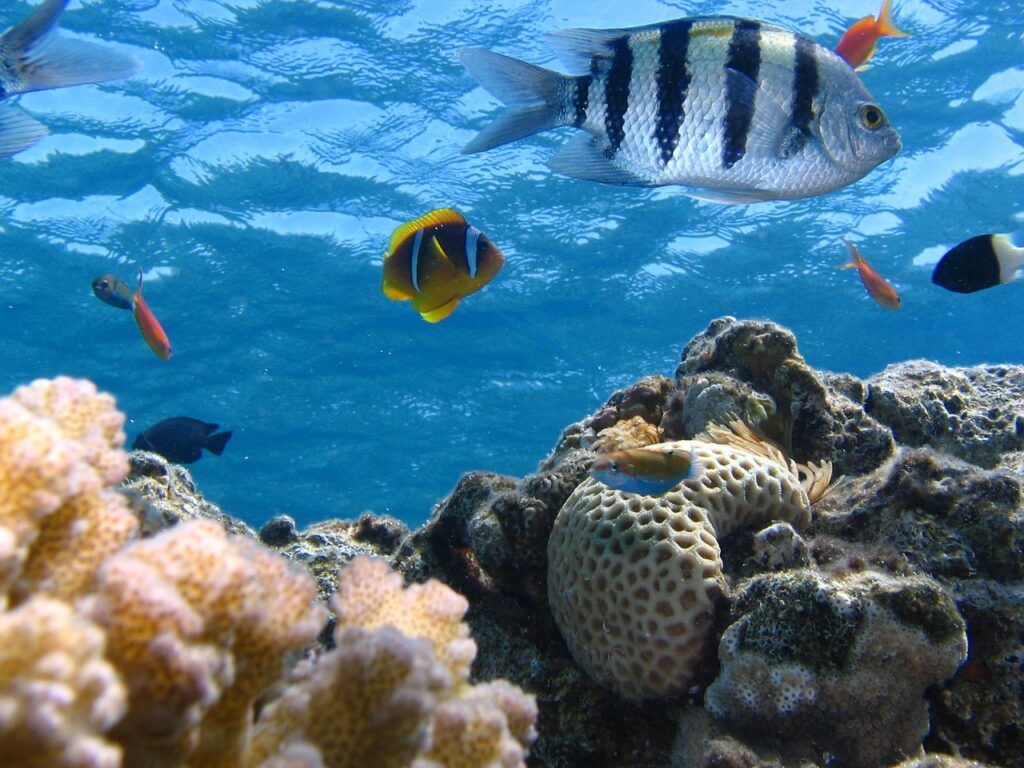Are you considering adding coral to your home aquarium but unsure of which option to choose? Identifying the different types of coral available today will give you a great start at building the perfect ecosystem to make a tank that is destined to thrive.
Before you go out and get any type of coral, it is important to know the types of coral options you have and how they will thrive in your specific tank.
In this article, we will be discussing:
- What is coral
- What are the three main types of coral
- what are the three main types of coral reef
- Different options of coral for each main group
What are Corals?
While many people may look at coral and believe it is some type of beautiful underwater plant or formation, corals are actually a large colony of hundreds and even thousands of individual animals or polyps. These polyps are most certainly alive and have openings that act as a stomach on one end.
Corals feed most commonly at night time, using their tentacles to catch small prey such as tiny fish and other water creatures. To capture their prey, coral uses tiny stingers to stun them before consuming them.
What are the Three Main Types of Coral?
There are three main types of coral, large polyp stony coral, small polyp stony coral, and soft coral.
Having the ability to identify the different types of coral can help you make an educated decision as to what type you should add to your home aquarium or can give you insight into what is yet to come if you dive into the deep seas.
Large Polyp Stony Coral
Large polyp stony corals are a type of hard coral and are stony-structured creatures with large fleshy polyps, which are designed to help collect the essential nutrients for survival from the water around them.
These corals have big exoskeletons, and they come in a wide range of colors and shapes, making them ideal for aquariums of all types.
Types of LPS:
- Favia
- Blastomussa
- Euphyllia
Small Polyp Stony Coral
Small polyp stony coral is another form of hard coral, with small polyps forming a reef. These corals have hard stony exoskeletons that are used to cover and protect their polyps. Just like large polyp stony coral, SPS corals have tentacles that are used to stun and feed on small creatures swimming close by.
Types of small polyp stony coral:
- Acropora
- Porites
- Montipora
The easiest way to tell the difference between these two hard corals is by the size of their polyps. You can also get a good idea of the types of coral you are looking at by the length of their “horns.” These tentacles are almost always smooth and sleek.
If you are interested in the most common form of coral that has large horns sticking straight out of the center of the colony, you probably want Acropora coral. If you want a unique shaped coral that will look interesting and make a great conversation piece if sitting in your tank, you should consider a hard coral such as Euphyllia.
Soft Coral
Soft coral, also known as Alcyonacea, is a fleshy coral. Rather than having a hard skeletal outer layer, they have small, spiny skeleton components called sclerites. This is a portion of the animal that is covered by a hard layer rather than enclosed in one.
Soft corals all have eight tentacles that filter feed mainly on plankton and particulate matter and are prone to live in darker areas of water than the hard corals, which explains why you can find many forms of soft coral to contain some algae. These “horns” are flexible and bendable, looking similar to fingers or trees and plants.
Soft coral has a jellyfish texture and is seen swaying underneath the water. These corals have feather-like horns and are often brighter in colors with shades of vibrant pinks and purples, not common in hard coral.
Soft corals are not typically known for reef-building, unlike their hard coral counterparts.
Types of soft coral:
- Xenia
- Toadstool Mushroom Leather Corals (Sarcophyton)
- Zoanthids
What are The Three Types of Coral Reefs?
There are three main types of coral commonly found in the seas and oceans of the world. All coral is separated from the shoreline by a lagoon, which is a small body of shallow water divided by the more significant water source due to coral formation.
Fringing Coral (AKA Shore Reef)
Fringing reefs are the most common type of reef and grow along the coastlines of the continents and near islands. Between the shores and the reef is a small pocket. These lagoons small make fringing coral stand out from the other two formations.
Barrier Reef Coral
Barrier Reef coral is not nearly as abundant as Fringe coral, and it runs parallel to the shoreline separated from it by a deep lagoon.
ATOL
Atol is a ring-shaped coral reef that circles entirely or partially around a lagoon. These corals typically form after an island already surrounded by fringe coral start to sink below sea level.
Best Types of Coral to Keep in a Salt Water Tank
Most soft corals make great options for saltwater tanks since they are extremely easy to maintain and can thrive in most environments; these coral also provide owners with brightly colored scenery.
Soft coral is the ideal option for new tank owners as hard coral is typically a little more high maintenance and is frequently seen in tanks of more experienced owners.
How Long Does Coral Live?
If you are trying to find something to last a lifetime in your tank, coral is a great place to start. This species of water creature is known to live up to 4000 years and is the longest living animal in the ocean.
Summing Things Up
While there is a whole slew of different corals that live in our oceans and seas, the three main types are soft coral, large polyp stony coral, and small polyp stony coral. All of these creatures are beautiful, unique, and easy to identify with their individual appearance and characteristics.



